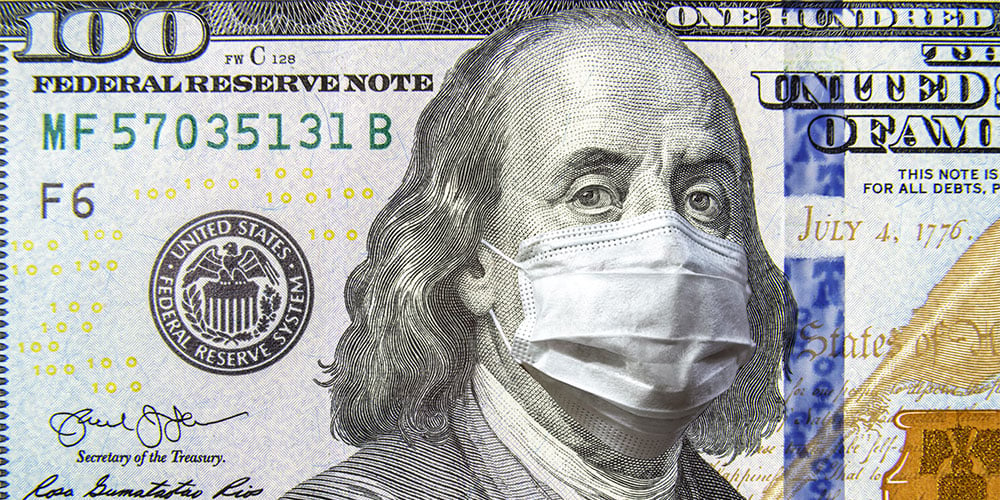By: Patrick Ungashick

To help our clients and other business owners and leaders respond to the unprecedented leadership disruptions caused by the coronavirus (COVID-19) outbreak, the team at NAVIX offers the following crisis management information series.
Responding to Coronavirus: How to Maximize Your PPP Funds
Despite widespread stories of a chaotic rollout of the CARES Act Payroll Protection Program (PPP), some of the first companies to apply have received their funds. With millions of eligible companies expected to apply for this forgivable loan program, it will be important to properly utilize any funds your company receives from PPP.
Review the following steps and tactics to comply with the program, maximize the loan forgiveness amount, and provide the greatest benefit to your company. (Note: The US Treasury Department changed several important provisions of PPP while the program was being rolled out, so it is possible that some of the information provided here may change, or that additional guidance may be provided. Business owners must consult their tax, legal, and exit advisors to discuss how this program applies to your specific situation.)
- Have a plan for how your company intends to use the funds prior to actually receiving them. Once your company receives the funds, an 8-week clock starts ticking. What your company does during this 8-week period determines the loan forgiveness, so it is best to be prepared before the funds are received.
- Be prepared to carefully document during the 8-week period the company expenses that qualify for loan forgiveness. Your lender will require that documentation to apply for loan forgiveness on your behalf.
- Create a balance sheet account to keep track of the PPP loan and funds.
- Deposit the PPP funds into a dedicated bank account. Document as you draw down the funds for eligible expenses to help create a clean audit trail.
- Carefully monitor how the funds are used, consistent with your plan. To qualify for loan forgiveness, you must use at least 75% of the funds for payroll costs, as defined by the CARES Act. That means you can use up to 25% of the funds for eligible non-payroll costs, which are: rent, interest payments on mortgages, interest on pre-existing loans, and utilities. (Note: For purposes of determining the percentage of use of proceeds for payroll costs, the amount of any Economic Injury Disaster Loan (EIDL) refinanced will be included.)
- Loan forgiveness may be reduced if either of the following occurs:
- Employees who made less than $100,000 of compensation in 2019 have their compensation reduced by 25% or more; OR
- The number of full-time employee equivalents is less than the same number of employees during; either February 15, 2019, through June 30, 2019; OR January 1, 2020, through February 29, 2020—you choose the more favorable period to apply.
(Two important notes here. First, it is unclear at this time exactly how loan forgiveness will be reduced, and we expect further guidance providing some sliding scale. Second, if employee terminations have already occurred, you can hire employees back by June 30, 2020, to still qualify for loan forgiveness.)
- Avoid utilizing other CARES Act relief programs that nullify participating in PPP, including:
- The Employee Retention Credit
- Deferral of Payroll Taxes
- During the 8-week period that starts immediately after receiving PPP funds, maximize the payment of expenses that qualify for loan forgiveness, for example:
- Time payroll where possible to maximize payments during the 8-week period
- Consider paying bonuses to employees who have demonstrated superior job performance during the crisis (remember compensation above $100,000 does not count toward loan forgiveness)
- Make catch-up payroll payments to any employees whose compensation was reduced as a result of the COVID-19 crisis
- Make additional or early payments on rent, mortgage interest, or utilities (up to the 25% threshold)
- Remember that any amount of the PPP funds not forgiven must be repaid within two years, but loan repayment may be deferred for up to six months.
- There is no penalty for early repayment, but do not rush to repay any loan balance that is not forgiven. Make sure your company’s cash position remains strong until the business crisis has clearly subsided.
- Avoid any misuse of the funds. Business owners using the funds for fraudulent purposes are subject to criminal charges.
The NAVIX team has helped hundreds of business owners prepare for exit. We have also helped countless owners and leaders deal with recessions, liquidity crises, and economic upheaval. Our experience and perspective enable us to guide our clients through difficult times, such as these.









